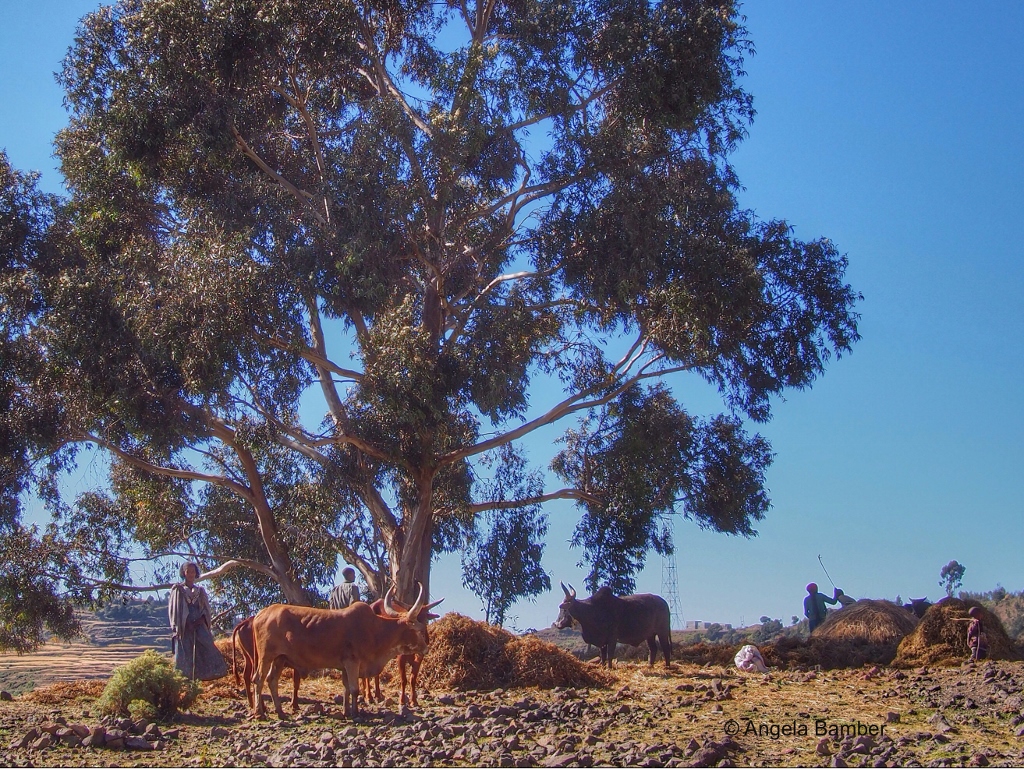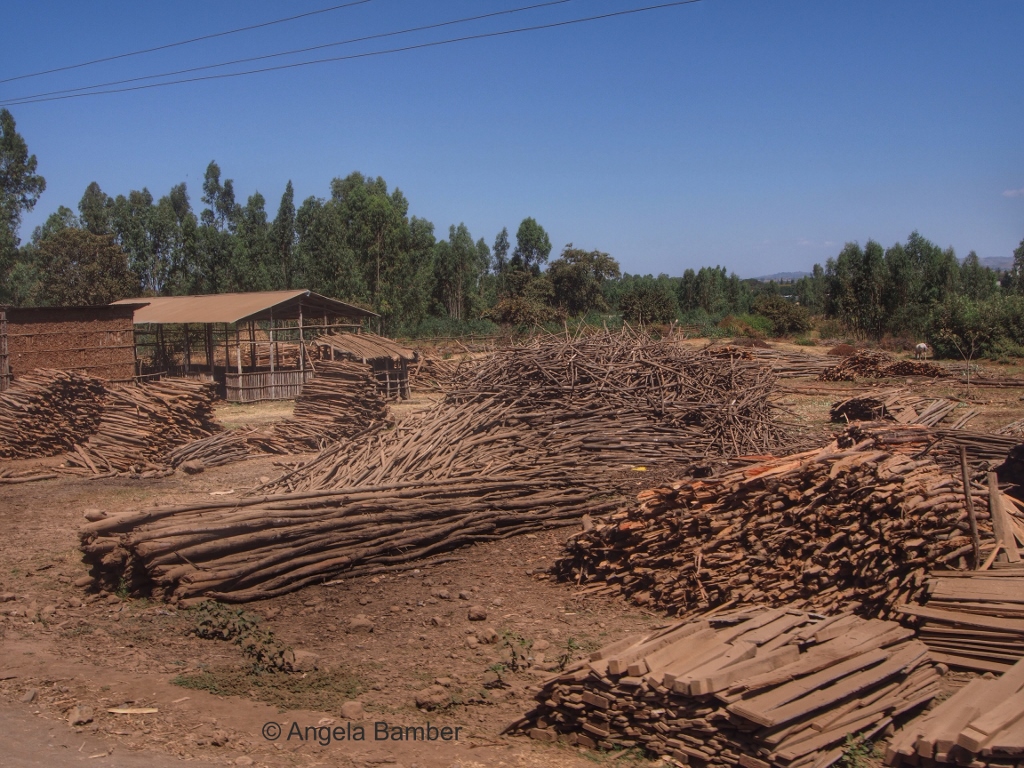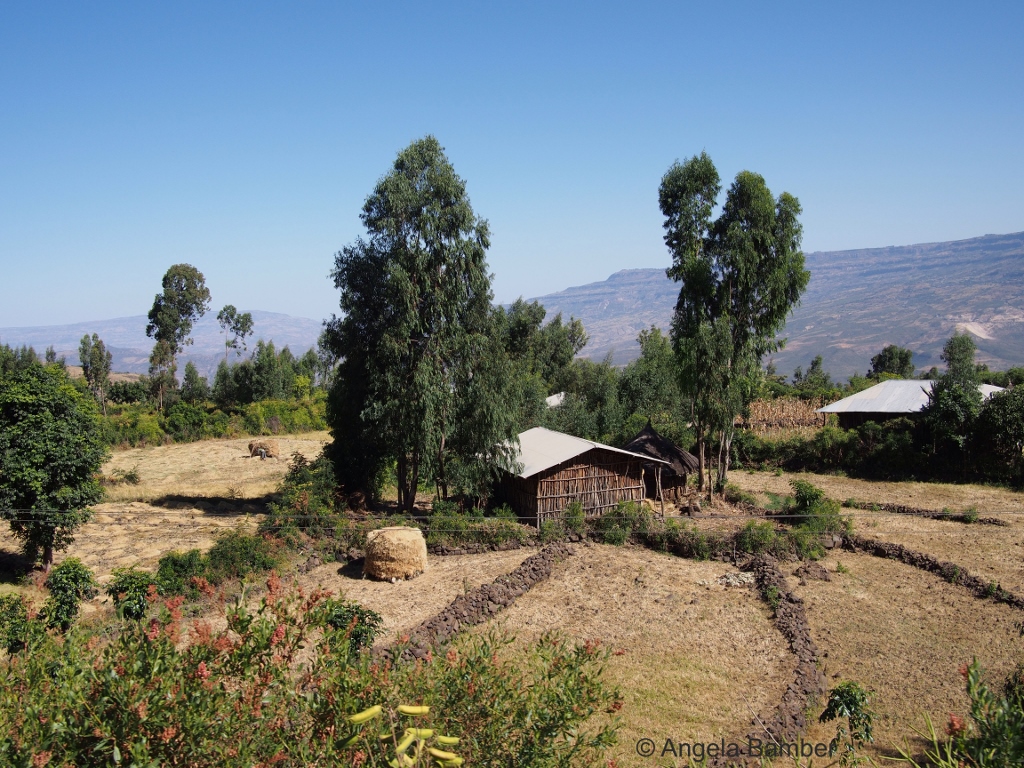
Australia's most successful export is not a person, or a food, or an idea. It is the Eucalyptus and it is the most planted genus of tree in the world.
Eucalyptus trees have been planted in Ethiopia for over a century and many people are absolutely dependant on it as a source of fuel and for use in construction. Despite its popularity there are widespread concerns about the environmental impact of this introduced species.
The best time to plant a tree is 20 years ago. The next best time is now --African proverb
In 1895, Emperor Menelik II introduced Eucalyptus plantations in Ethiopia in response to a critical wood shortage within the rapidly expanding capital, Addis Ababa. Ethiopia’s natural forest, consisting of broad-leaved trees often mixed with conifer species, were being depleted faster than they could be planted. At the same time the demand for wood was increasing as the population of the capital grew.
The introduction of Eucalyptus plantations was a logical solution; they are fast growing and thrive in ‘marginal’ environments, being tolerant to severe periodic moisture stress, low soil fertility and fire and insect attack.
Eucalyptus or gum trees
There are over 700 species of Eucalyptus. The majority of these are native to Australia, with only a few extending naturally into parts of Melanesia and the Philippines. They grow right across the Australian continent from hot and arid areas to the cold sub-alpine regions. They are widely cultivated throughout the world, from the Americas, Europe, Africa, the Mediterranean Basin, the Middle East, China, and the Indian sub-continent.
Many species are known as ‘gum trees’ as they exude a thick, astringent tannin or ‘gum’.
'I've been around the world, a couple of times or maybe more. I've seen the sights, I've had delights, on every foreign shore. But when my mates all ask me the place that I adore, I tell them right away. Give me a home among the gumtrees....' --Australian folk song
Today, Ethiopia has the largest area of Eucalyptus plantations in East Africa, with 15 species widely planted. It dominates many rural and urban landscapes.
In Northern Ethiopia, less than 5% of native forests remain and are under constant threat.
Advantages of Eucalyptus species
- It is fast growing
- It requires minimal care
- It grows in wide ecological zones and poor environments
- It coppices after harvest
- It resists environmental stress and diseases
- Its seeds are easy to collect, store and do not require pre-sowing
Disadvantages of Eucalyptus species
- It drains water resources
- It enhances soil erosion
- It suppresses undergrowth
- It depletes the soil of its nutrients
- It cannot provide habitat or food for native wildlife

Environmental impact
There has been research into the environmental impact of the introduction of Eucalyptus plantations within Ethiopia. Dessie and Erkossa (2011) found that some of the criticisms of the Eucalyptus are justified but argue that only some species, mainly the deep rooted types, drain water resources, and that poor forestry practices, like high planting densities and short crop rotations, are primarily responsible for depletion of the soil’s nutrients, increased soil erosion, and suppression of the undergrowth.
They believe that the environmental impact can be minimised through better education of farmers and other stakeholders, and better forestry practises, including proper matching of species to site, planting fewer trees per unit area, minimising the clearing of native forest for plantations, promoting mixed planting, and increased rotation periods.
Other studies back these claims, arguing that most Eucalyptus species are very efficient water users, and that the lack of leaf litter (largely collected by people for fuel) contributes to soil erosion, by preventing its incorporation into the soil system to slow down runoff and improve infiltration, and contributes to poor soil quality, by preventing the return of nutrients to the soil. It recommends the (conservative) use of Eucalyptus species with deep roots like E. globulus, which has a strong tap root and good lateral root system, on sloping sites, and mixed planting of eucalyptus with acacia species, like A. nilotica which produces a high amount of litter (8000kg/ha/year). The increase in the litter fall will then improve the soil nutrient bank.
The final concern, that Eucalyptus cannot provide a habitat or food for native wildlife is a problem with many exotic species and not just Eucalyptus.

Socio-economic impact
Socio-economic studies have shown that these plantations have acted as a buffer against financial crisis for many poor farmers on land unsuited to sustainable agriculture. They make a substantial contribution to the income of the household. One study reported that on average at least 26% of total family income came from such plantations. In addition to this, they decrease cooling and heating costs by up to 30% when used as windbreaks.
Ethiopian farmers, when interviewed, stated that they favoured the genus for household use (construction, firewood, farm implements), for additional income (it generally yields more money than other tree crops), for soil conservation and gully stabilisation, and to drain marshy land, which could harbour malaria, and to ensure land tenure security.
A home among the gum trees
The Eucalyptus is the most planted genus of tree in the world, with over one hundred countries growing Eucalyptus in plantations. Since 1960, worldwide eucalyptus planting has doubled every decade. In 1990 the total area in hectares planted by eucalyptus was 7 million. In spite of its popularity there has been widespread criticism of its use in Ethiopia and concerns about its harmful environmental impact.
These criticisms appear to be overstated. A range of studies have supported the use of certain species of Eucalyptus and highlighted the need for better education and forestry practices rather than a complete move away from Eucalyptus plantations in Ethiopia.
That is good news for a country with such a huge reliance on Eucalyptus plantations for both fuel and construction, and for poor farmers who could not survive without it.